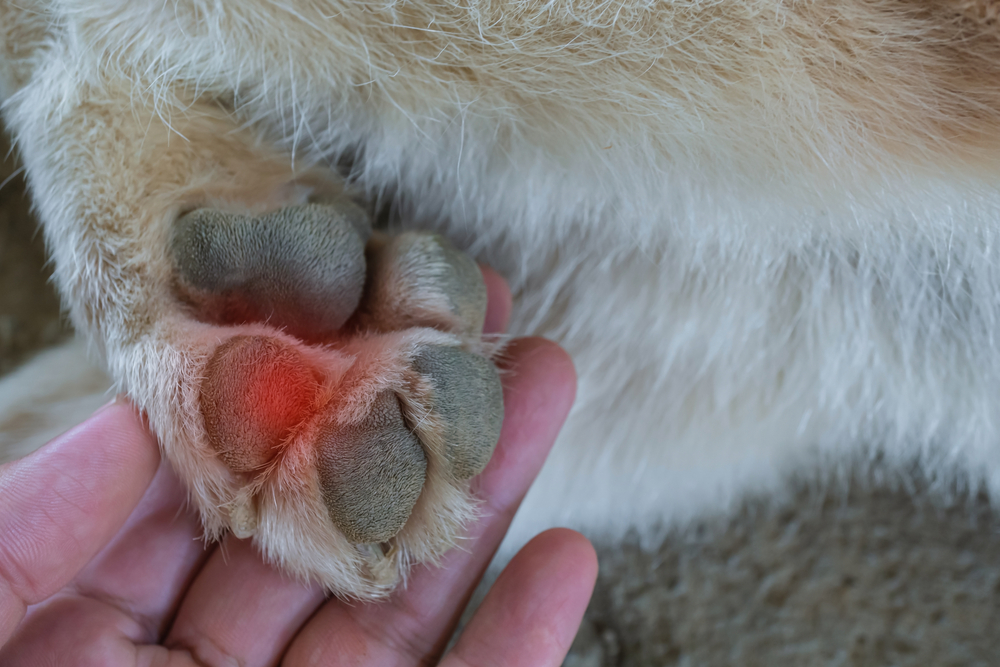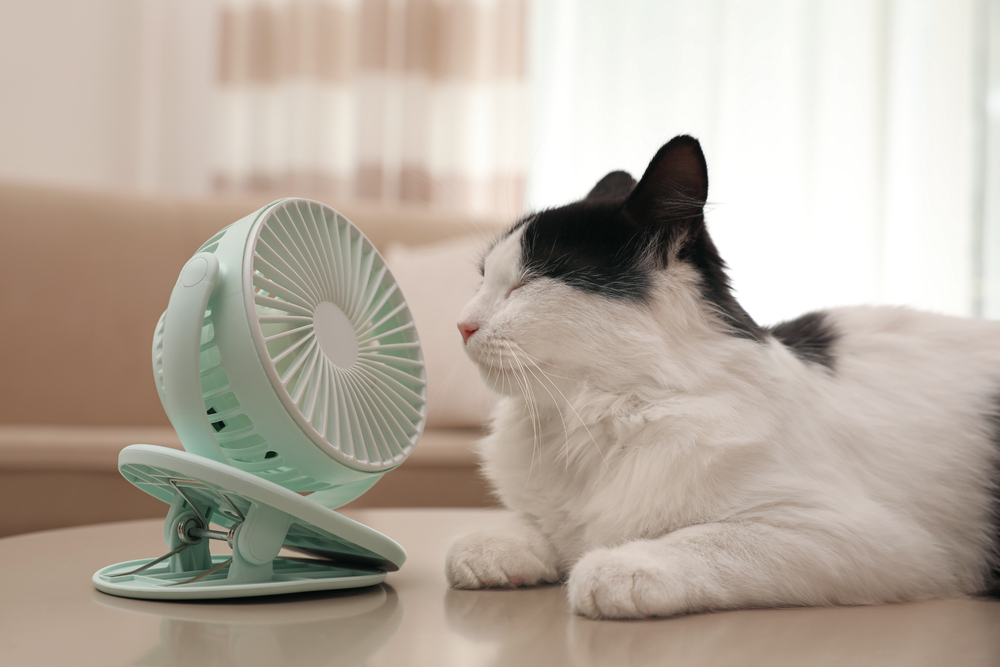As summer temperatures soar, your pet looks to you for comfort and protection. Ensuring your furry companion’s safety and wellbeing during extreme temperatures can be daunting, and misconceptions can lead you to inadvertently put your pet’s health at risk. However, a whirlwind of pet safety misinformation is as misleading as a mirage in the blistering sun.
Our Southern Kern Veterinary Clinic team is here to help you navigate the sea of pet heat safety misinformation, so you can make informed decisions for your four-legged friend’s summer health and comfort. We shed light on four common pet heat safety misconceptions that can put your pet in danger.
Myth #1: All pets tolerate heat in the same way
Similar to humans, pets have varying heat tolerance levels. Some pets are especially susceptible to overheating and heatstroke, including:
- Flat-faced (i.e., brachycephalic) breeds — Brachycephalic dog and cat breeds have small nasal openings and a long soft palate in the back of their mouth, which limit airflow. They also have a narrow windpipe and have to work hard to take in enough air to keep cool. Their unique facial structure increases their susceptibility to heat-related conditions such as heatstroke. The following breeds have the highest heatstroke risk:
- Pug
- Bulldog (especially the French bulldog)
- Persian cat
- Himalayan cat
- Thick-coated pets — Pets with thick or double coats, such as huskies, malamutes, or chow chows, can struggle to regulate their body temperature when the weather is warm. Their dense fur acts as an insulator that can trap heat, making cooling down difficult.
- Pets with dark fur — Your pet’s coat color can influence the amount of the sun’s heat they absorb. Dark colors absorb more heat than lighter ones, so if your four-legged friend has dark fur, their body temperature can rise quickly when exposed to sunlight, increasing their overheating risk.
- Senior pets — As they age, pets become increasingly susceptible to heat-related illnesses, because their bodies may not regulate their temperature as efficiently. In addition, a senior pet may have other health conditions that exacerbate heat’s effects.
- Puppies and kittens — Very young pets cannot regulate their body temperature as well as adults and they are typically extremely active, which can cause them to overexert outside on hot days.
- Pets with health conditions — Conditions such as heart disease and a respiratory disorder can affect a pet’s ability to regulate their body temperature, hampering the body’s ability to cool down.
- Overweight and obese pets — Fat acts as an insulator, trapping body heat. The more body fat a pet has, the less able their body’s capacity to cool down once they’ve become overheated.
Pets who struggle to cope with high temperatures are significantly more susceptible to heat-related illnesses. You should closely monitor your furry pal for discomfort or heat stress signs when temperatures rise.
Myth #2: Pets can stay in parked cars if windows are open
This misconception is a dangerous one for pets. Regardless of whether the windows are rolled down or your vehicle is in the shade, a vehicle’s interior can heat up extraordinarily quickly, reaching deadly temperatures within minutes. Leaving your unattended pet in a parked car is illegal in many states, because animals can develop heatstroke and succumb within minutes. Although your pet may love car rides, leave them in the safety and comfort of your home during hot weather.
Myth #3: Pets don’t need extra water on hot days
While you inherently know your four-legged friend needs more water when the weather is hot, you may forget to refresh their bowls when temperatures soar. Pets must stay hydrated, especially during hot weather. Your pet’s water intake needs increase substantially in the heat, and you should ensure your furry pal always has access to fresh, clean water. If you’re going on a walk or a trip with your pet, bring along a water bottle and a portable bowl so you can offer your pet untainted water at regular intervals. By ensuring your pet remains hydrated, you help prevent them from experiencing heat-related illnesses.
Myth #4: Pets have paw pads that can withstand hot surfaces

Although their thickest skin is on their feet, pets are susceptible to burning them if they are exposed to a hot surface. A paved surface becomes much hotter than the air temperature, and it can burn your pet’s paws within minutes. During the hot summer months, veterinarians often treat paw pad burns because owners simply don’t realize the danger of walking their pet on hot pavement. If the pavement is too hot for your bare feet, it is too hot for your pet’s paw pads. If you and your pet go out during the day’s hottest temperature, walk on the grass, and stick to shady areas.
By learning the truth to four pet heat safety myths, you can ensure that your four-legged friend stays safe, healthy, and happy during the hot summer months. Always monitor your pet in the heat, and if they exhibit heatstroke signs, including heavy panting, excessive drooling, lethargy, vomiting, and collapse, bring your furry pal to a cool, well-ventilated area, and immediately contact our Southern Kern Veterinary Clinic team.







Leave A Comment